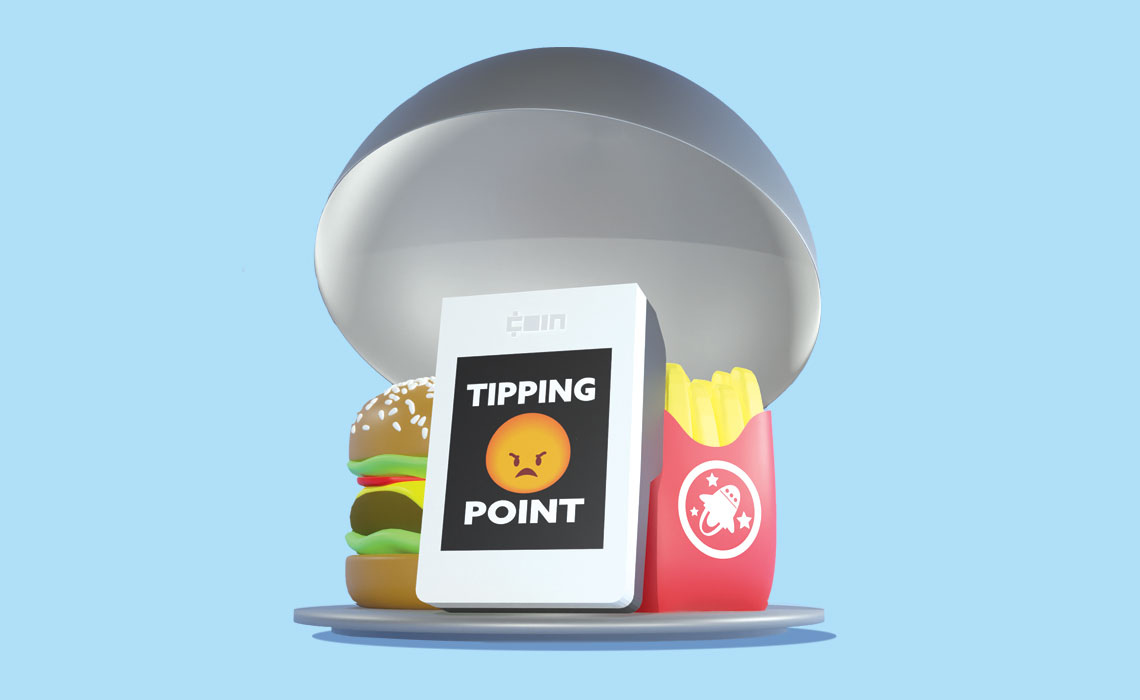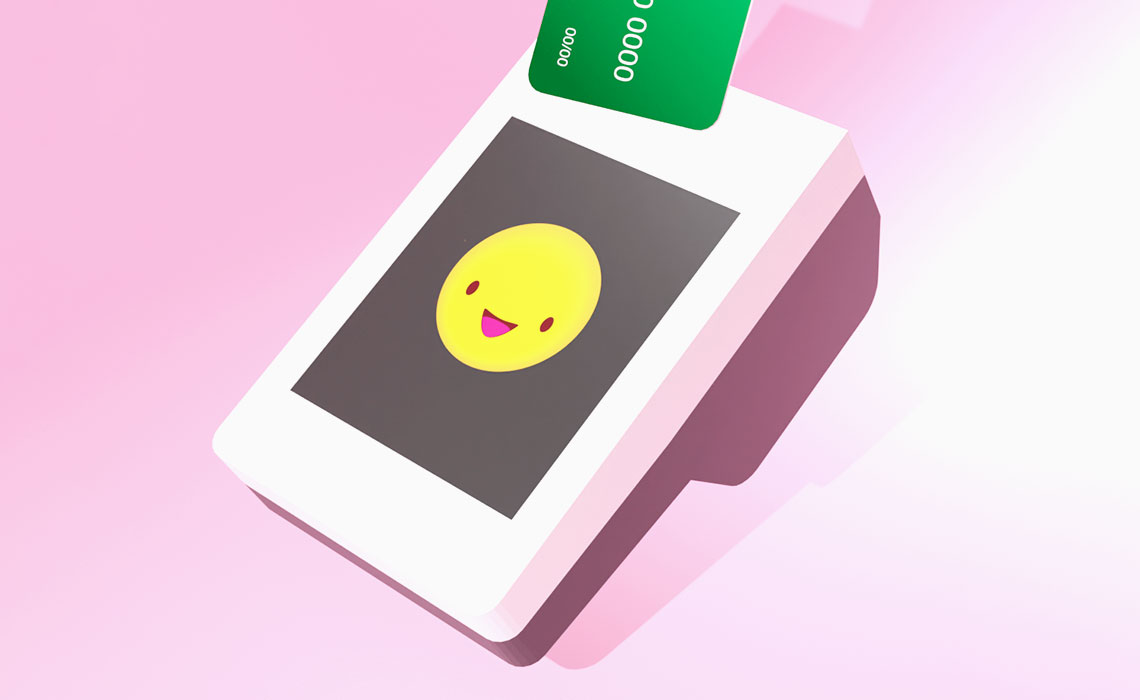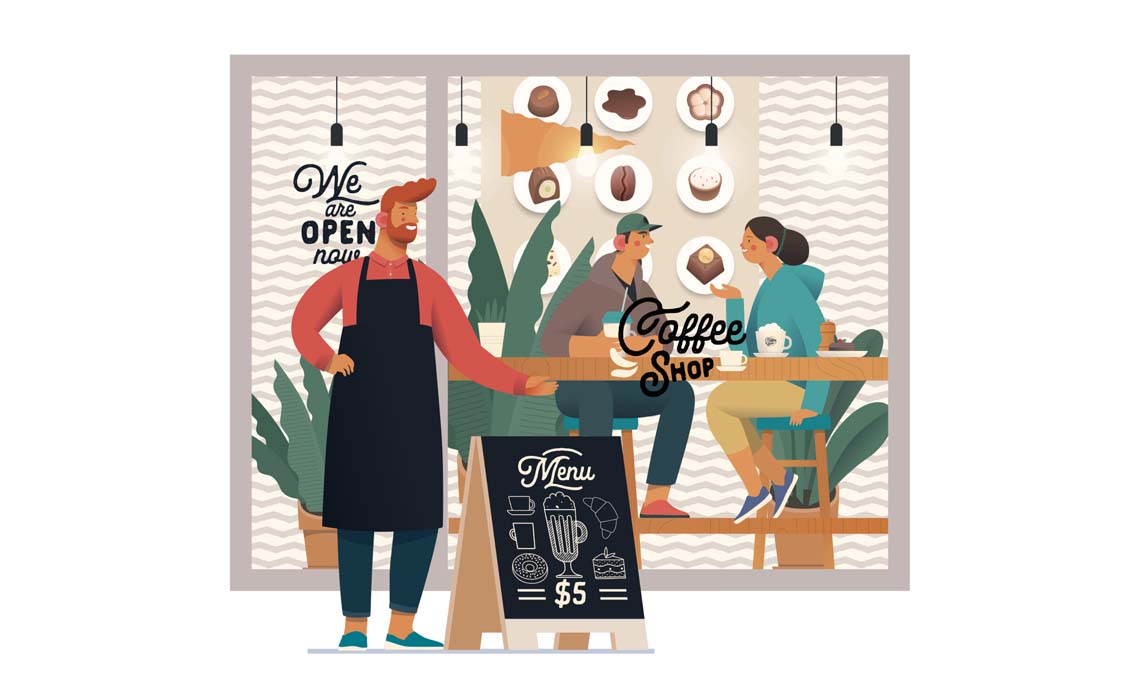Voluntary tip or a rip-off?

Not long ago, a tip was a way to appreciate the server who delivered your meal, a nod to the bartender who mixed your martini or something extra for the cabbie.
Now, an expectation of tipping extends beyond those scenarios, seeping into everything from fast-food outlets to automotive shops and the “sandwich artist” at Subway.
According to the Angus Reid Institute, more than three in five Canadians feel they are being asked to tip more, and more often.
And many don’t like it, with 83 per cent saying they face that hustle to rustle some extra pay in too many places.
Dr. AnneMarie Dorland, PhD, says that human interaction (think eye contact and conversation), once so integral to tipping, is shifting, with it increasingly an impersonalized transaction.
While once a way to say, “Here’s something to show my appreciation for what you did for me,” it’s become more of an expectation, an entitlement and even a sneaky surcharge.
“Tipping is not connected to a human anymore. We’re being asked to shift our cultural perceptions of pricing, essentially, when we have tip creep,” Dorland says, who is an assistant professor of marketing, branding and creative strategy in the Bissett School of Business. “I was at a restaurant yesterday and the tipping options I was presented with were 20, 25 or 30 per cent, which is bananas. I know that’s not a technical marketing term, but what? And I have no way of knowing this is being collected by the right person. It’s just going into a machine.”
Dorland says it’s even more obnoxious when an online ask comes before the service is rendered, which is what happens when she orders her latte via an app.
“I plan to pick it up at the mobile order counter and leave, and it says, ‘Would you like to leave a tip?’ And now I’m in this weird relationship where I’m never going to come in contact with a person and I’m being asked to give the company a tip,” she says. “I’m essentially online shopping.”
It’s an example of how old-school thinking about tipping being a voluntary gesture doesn’t really work in the digitized world.
“I’m tipping Starbucks, which is weird because Starbucks should already, for the price, be providing me with an excellent latte,” Dorland laments. “And yet now I’m being held hostage in thinking that perhaps, if I don’t hit that tip button . . . it just won’t be as good. It won’t be as full, it won’t be as hot, it won’t be as whatever. So, really, it’s a fee bump and we get mad about that, right?”
Right.
Two in five Canadians say the extra cost prevents them from dining out, and rather than viewing tipping as a bid for better service, they now see it as nothing but a cash grab.
About two in three American adults also hold negative views, saying tipping culture is out of control. Back on this side of the border, nearly 80 per cent of Canadians believe it no longer serves as a shout-out for a job well done, with three quarters calling it a ploy by employers to underpay staff.
That said, people not only continue to tip, they’re tipping more, according to the Angus Reid Institute’s study.
While 23 per cent said they gave a tip less than 14 per cent the last time they went out for a meal, down from 44 per cent of people in 2016, the proportion who say they left a tip of 20 per cent or higher has more than doubled, to 21 per cent from eight per cent.
But why do so many still pay up if it isn’t panning out?

“I think it has become more of a social obligation. We have stopped considering whether it’s optional,” Dorland says.
She likens tips, in the more traditional sense, to bait.
“We tip because we want good service. I’m rewarding something I expect and because we are humans, we respond well to treats,” she says.
But because tipping is increasingly impersonal, it has switched from “an incentivization program for good service” to more of an obligation, making that bait and reward scenario somewhat moot.
Like it or not, though, many appear to be on board. Dorland compares it to a slow boil.
“The water keeps getting warmer and we just don’t notice. We’re going to complain and moan and the first time we are asked to pay 30 per cent, we’re shocked, but it just becomes a new way of doing business,” she says. “It’s normalized.”
The major move in consumer habits into the online world translates into a more disconnected shopping experience where that clink of coins in a tip jar is replaced with an approving beep on a payment machine.
“So, it kind of removed the humanity from it,” Dorland says. “I don’t know who I’m tipping. It’s just an algorithm collecting money . . . an additional fee for service without the accountability of improved service, without raising the wages of people doing the work and without raising the expectations of the consumer.”
The silent endorsement
Assistant professor of accounting, Dr. Jason Tang, PhD, says people seem to have strong opinions on tipping, but the fact that they pay, anyhow, endorses the way it is evolving.
He, too, says it isn’t what it once was.
“Some of the historical rationales for tipping no longer apply,” he says.
Now, a number of other influences, including social pressure, promote the practice.
Research shows people often tip because others do, he says.
Digitization is also a driver. One in three people feel pressured to tip, but they do anyway, with nearly 65 per cent leaving at least 10 per cent more when they digitally tip versus paying cash.
While a 20 per cent tip may be generous, Tang says it is commonly one of the lowest minimum options on point-of-sale terminals. That creates an anchoring effect, which means pre-prompting tipping amounts results in people doling out more.
Tang, whose dissertation on tipping was published in the Journal of Foodservice Business Research, says the cultural practice originated in Europe. Introduced across the pond, it was initially viewed as un-American, instead seen as a mechanism to keep wages low and a bid to support the servant class.
Of course, that’s all changed. It has since become a very American phenomenon, Tang says, and Canadians seem to be echoing U.S. tipping trends, which see higher amounts paid out at more places.
And, yes, it makes sense to help staff pay their bills. In the U.S. in 2019, servers in 17 states earned just over $2 an hour in wages, according to Tang’s research. Here in Alberta, up until 2015, the “server” or “liquor wage” meant pay for those in the service industry could be $1 less than minimum wage.
Tang says the minimum server wage has an indirect effect on the tip rate, but everything from food and service quality to atmosphere are also factors.
About 13 per cent of Canadians believe customer service has improved as tips have increased, but they appear to be mistaken.
“Does (tipping) really ensure service quality? Not from the studies I’ve seen and ones I have conducted,” Tang says.
That said, empirical studies find service quality does influence tip rate to varying degrees with ample evidence to show tipping is fairly fickle and far from fair.
For instance, research published in the Journal of Economic Psychology found attractive servers earn roughly $1,261 more per year than unattractive ones.
And Tang has reviewed literature suggesting the kind of lipstick a server wears can influence patrons to tip more — if it’s red.
While many people complain about a sense of entitlement to tipping these days, the fact so many are so generous tells another story.
“For the time being, it appears that society is willing and accepting the changes to the social norm of tipping,” Tang says. “However, it will be interesting if tipping will evolve to a form where society is no longer willing to accept it.”
Your tap, your choice
Many consumers are well aware there is often a practice we might call “prodding” when it comes to how much to tip.
So-called dark design sees people presented with default options on a pay pad that can corner people into picking one — say 15 per cent or 20 per cent or other choices.
Dr. Milena Radzikowska, PhD, MRU’s chair of the Department of Information Design, says this is part of a very long history of design working to influence behaviour.
“Whether that’s to not cross the street where they’re not supposed to or to go vote or to purchase a particular product, it’s yet another technique to direct behaviour, in a particular way,” she says.
That said, design can only go so far.
With tipping, for instance, no matter how leading default options might seem, they will not always override the individual values of a consumer who has the final say on what they pay.
“From the customer’s perspective, it might be considered to be manipulative, saying, ‘You are assuming I will do this,’ ” Radzikowska says. “Your belief system could be that you only tip for good service and when there’s no good service, you don’t tip, and when there’s no service, you don’t tip. So depending on your own values, you will have an opinion on what you consider to be fair.”

Radzikowska can see how the suggestions can sometimes be manipulative but stresses the final choice comes down to the consumer.
“I personally have struggled with that, where I’m like, ‘But you literally didn’t do anything other than your job. You literally just poured me some coffee but you’re asking me for 20 per cent. I don’t know what to do with this,’ ” she explains. “And depending on where I am on a particular day or moment, I land in a different spot a little bit, because I also recognize I don’t want to be doing that job. I am grateful that this person has made my coffee, poured it for me.
“Where I think I’ve landed is, if someone is a complete jerk, just not even incompetent … then I will probably not tip because I am not rewarding terrible behaviour. And then, after that, I try to err on the side of, ‘This person isn’t getting paid enough … and they did what I wanted them to do. Maybe they even smiled at me.’
“But again, it depends on your own values and where you sit and what you consider to be fair.”
She says it’s encouraging, as a design professor, to see more conversations focus on the powerful role of design in “shifting, changing, reinforcing (and) co-creating” culture.
And with that, there needs to be an awareness of how designers’ impact can go beyond the bottom line.
“They’re using particular design strategies in order to have a particular behaviour take place. And independent of whatever is happening there, what I appreciate is that we cannot consider ourselves as immune from responsibility. That when we make things, we should be really thinking about, what are the consequences?” she says. “For a very long time in the 20th century, the idea was, the client has this objective or you’re trying to raise revenue by this much or you’re trying to push this product and the designers have the skills to be able to make that happen or to help make that happen.
“You are a participant in the things you create which includes the negative consequences those things may have on people.”
The new wave?
Eric Myers, an MRU human resources and finance instructor, says data shows financial obligations means some people tip less, or not at all.
And that sense of duty to tip hits some harder than others.
“I think the younger generation, the gen-Zers specifically, feel less of an obligation to tip. It’s almost like a push back (saying) being a customer means giving an organization money and that should be enough.”
That’s why Calgary’s Prairie Dog Brewing has a “no tip expected” policy.
The founders feel the front- and back-of-house employees all contribute to the customer experience but traditionally don’t share equally in tips, which is why the company pays higher wages and shares the tips that do come in.
No expectation be damned, Prairie Dog customers dole out an average tip of 13 per cent, which adds about $6.50 to everyone’s hourly pay.
Supervisor Beth Matsen says the policy improves the experience for guests.
“Tipping has become more expected and common in every customer service industry whereas before it was more restaurants and bars. Since it has expanded to a lot more places people are kind of annoyed because we are expected to tip everywhere,” says Matsen, an MRU psychology student. “(Our policy) takes the pressure off them and puts it more into their hands where they can truly tip based on service.”
However someone tips, ruggedthuglife.com (a Canadian travel companion) figures people have a say in what they pay.
“Even though legally, tipping is optional, to not leave a tip is a faux pas when you’re getting table service in a restaurant in Canada,” they say. “Fifteen per cent is the norm, 20 per cent if they exceeded your expectations, 10 per cent if it was below par. No tip if it was despicable, rude service.”
Tales from a veteran server
Nadia Moharib, co-author of this story, spent more than a decade as a server and bartender.
It’s a tip from an elder when I tell young ones to get a serving job.
Generous folks and regulars who always left a big tip and a tad tipsy offered an upgrade to minimum wage, helping me to pay my tuition and save up for the down payment on my first condo.
Beyond the budgetary boost, tips allowed those who wined and dined at my tables to have their say on the service provided.
We worked hard for our tips so it was nice when it paid off. And no tip was a commentary, too.
We wait staff figured those who left nothing were cheap, rude or thought the boss should hike our pay rather than requiring customers to compensate for low wages.
There was no mixed messaging when someone left a lone penny — obviously the equivalent of the middle-finger salute.
Back then life was low-tech, however. Tips were hard, cold cash tucked under the salt shaker.
Servers didn’t linger uncomfortably close while a customer was pressured to pick between options on a point-of-sale terminal. Tipping was a choice, not an obligation.
Like most former servers, I tend to tip big.
It’s not the server’s fault but sometimes they suffer because when the point-of-sale machine’s suggested prompts tick me off, I tend to tip less.
Seems everyone wants a tip these days. And that’s fine but I’m of the old-school camp that says it ought to go to those who work for it.
I’m more inclined to leave a generous one for someone who navigates winter roads to deliver my dinner than I am the server who walked from the kitchen to my table with a plate of pasta.
Drive me to the airport and there’s a tip in it. Hand me salad rolls at the take-out? Not so much.
Still, I believe tipping is an important bit of human interaction. And as someone who financially benefited from it, I want to pay it forward, but I want it to be of my own volition, not because it is a demand stemming from a sense of entitlement.
